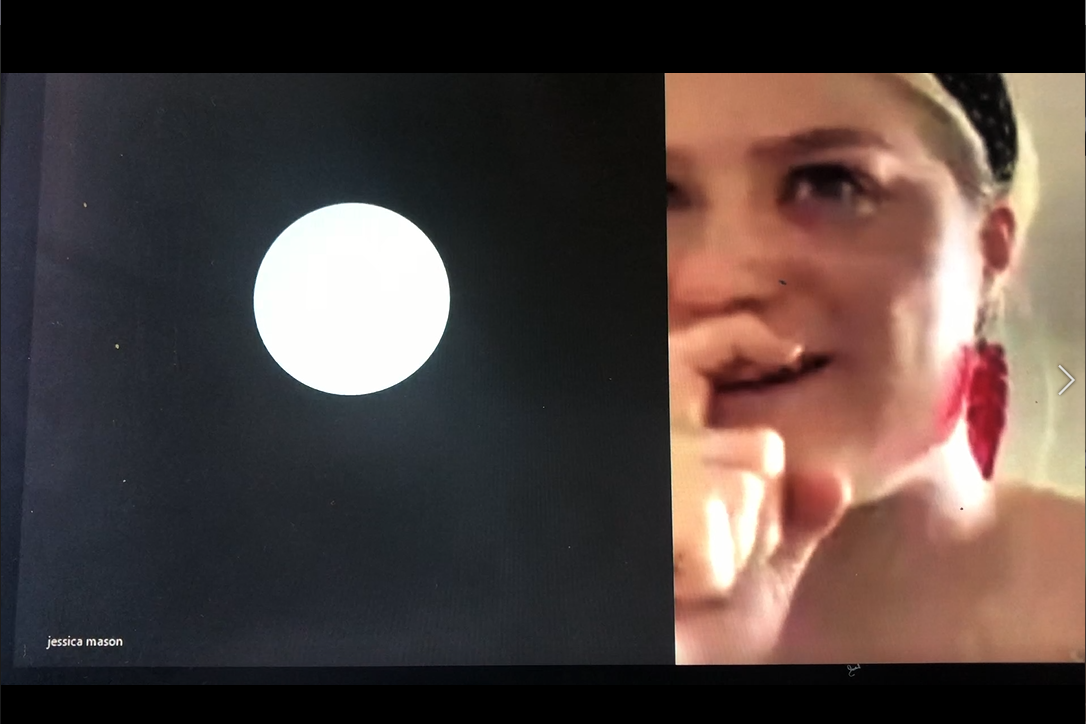MA Art & Material Histories student Ellie Arden interviewed ceramic artist Jessica Mason about her practice, studying at Clay College, and the material experience of working with clay. You can watch excerpts from their conversation below.
00:10: On touch
EA: We’ve done a lot of this on our course, trying to realign our viewpoint through materials and how we interact with them, and I think one big thing that’s come up for me is how disconnected we have become towards materials and how things are made. I’ve found with my research into the body, mental health, and the nervous system; the more and more distant we’ve become, the less regulated that becomes.
I had my first time throwing a couple of months ago at Rochester Square Studio in Camden; we only did a couple of hours but afterwards I felt so much more in my body than I have in years. I thought, wow, this power of touch, and going into this zone, it’s incredible. And I think that’s why there has been such a rise in this yearning to make. If you want to be really poetic about it, clay has been used for so long, and as such sort of shared heritage and history to it, that it makes me feel very connected to everything.
JM: It’s very interesting. I’ve been listening a lot as I’ve been making to an Irish poet called John O’Donoghue, and he talks about clay holding the rhythm of the earth, and we are also clay. I guess it works on both those levels, as you were saying about the nervous system being distanced, is because we being made of clay hold that rhythm. And then when we also engage with the landscape around us, it echoes that rhythm back to us.
02:25: On the languages of clay
JM: Particularly when you’re wood firing, which is something that I’m interested in, it’s like the fire has its own rhythm as well, so you have to be in conversation with the piece all the way through, and learning that language at the different stages that it has. With different clays as well – every clay has a language. I think it very much in terms of language, which links to my fine art parts of me as well, even though doing more tableware.
Our course [at Clay College, Stoke] is structured so that we start in earthenware, then go into stoneware, then we go into porcelain. So we move through the different clays, and every time you change, it’s like getting to know something completely different. Even the different stoneware clays have different qualities, sensitivities…
EA: It’s like it’s a personality, almost.
JM: Definitely, a personality. It’s very humbling, learning it, and it takes quite a while to build up. It’s almost like the knowledge has to go into your hands. Particularly with throwing, it’s so much about hand skills and your muscles in your hands, and posture, and strength, and technique; they say that you have to do the same motion until you almost forget that you’re doing it and that’s when the pot can speak.
EA: What it makes me think of is driving – I remember my driving instructor saying “you’re not going to be able to drive until you forget that you’re driving.” I thought “that sounds very dangerous to me!” You’re living in the front of your brain, which is why you can’t have this autopilot mode. Bodies are amazing like that. I’ve done a lot of work looking into the nervous system, really learning our bodies. I read a book called The body keeps the score: mind, brain and body in the transformation of trauma [by Bessel van der Kolk], and I think there’s something about clay, and touching, and like you say they do have personalities…
JM: And a memory, as well. I’m sure you’re discovering that. And that memory stays. We are doing teapots as our project at the moment, and even throwing the spouts – they are twisty, they contains that twist, and the spout will move quite a lot, a good few centimetres, once you fire it. So you have to make a test spout, fire it, measure it, and counteract how much it’s going to move. Even when you’re firing stuff you have to be aware of how it’s moving. It’s always alive, all the time.
06:05: On tending to clay
JM: Anne Mette Hjortshøj is from the island of Bornholm in Denmark, which is traditionally a potters’ island. So she collects her own clay, and she has her studio close to home because she talks about ceramics being like your grandmother – you can’t leave her alone, you have to go back and keep checking on her, making sure she’s okay. And it is a bit like that. The clay – you can cover it up with plastic to slow the drying, but when it’s ready, you have to do stuff, so you have to constantly be in this dance with it. When things need to happen, you need to do them. Particularly when I’m throwing, I lose track of time, it is interesting, that interaction with it is not like anything else really.
07:00: To make, to destroy
JM: Honestly, the best way to learn is to throw a cylinder, chop it in half and see how thick your walls are. Once you can see, once your eyes can see your mistakes and where you’ve gone wrong, then it goes into your hands, and you make it better. You can’t see it from the outside without slicing it in half. It’s really interesting seeing people be really nervous about that, and then get over it.
EA: I guess it’s ingrained in a lot of us for lots of different reasons –political, social, economic– the idea of “what’s the point of making something if its not going to be a product?”
JM: It’s consumerism in a way. You want to own it, you want to put it somewhere, you want to adorn your life; rather than just be in the experience of it, fully. Even though people are doing more experience-based things, people still want a result from them. Even though the experience and what it’s building is something unseen, which is learning, and that’s more rewarding in a way, more about growing. It’s a funny one. It actually stilts your growing, it keeps you closed in when you don’t give up and release it.

